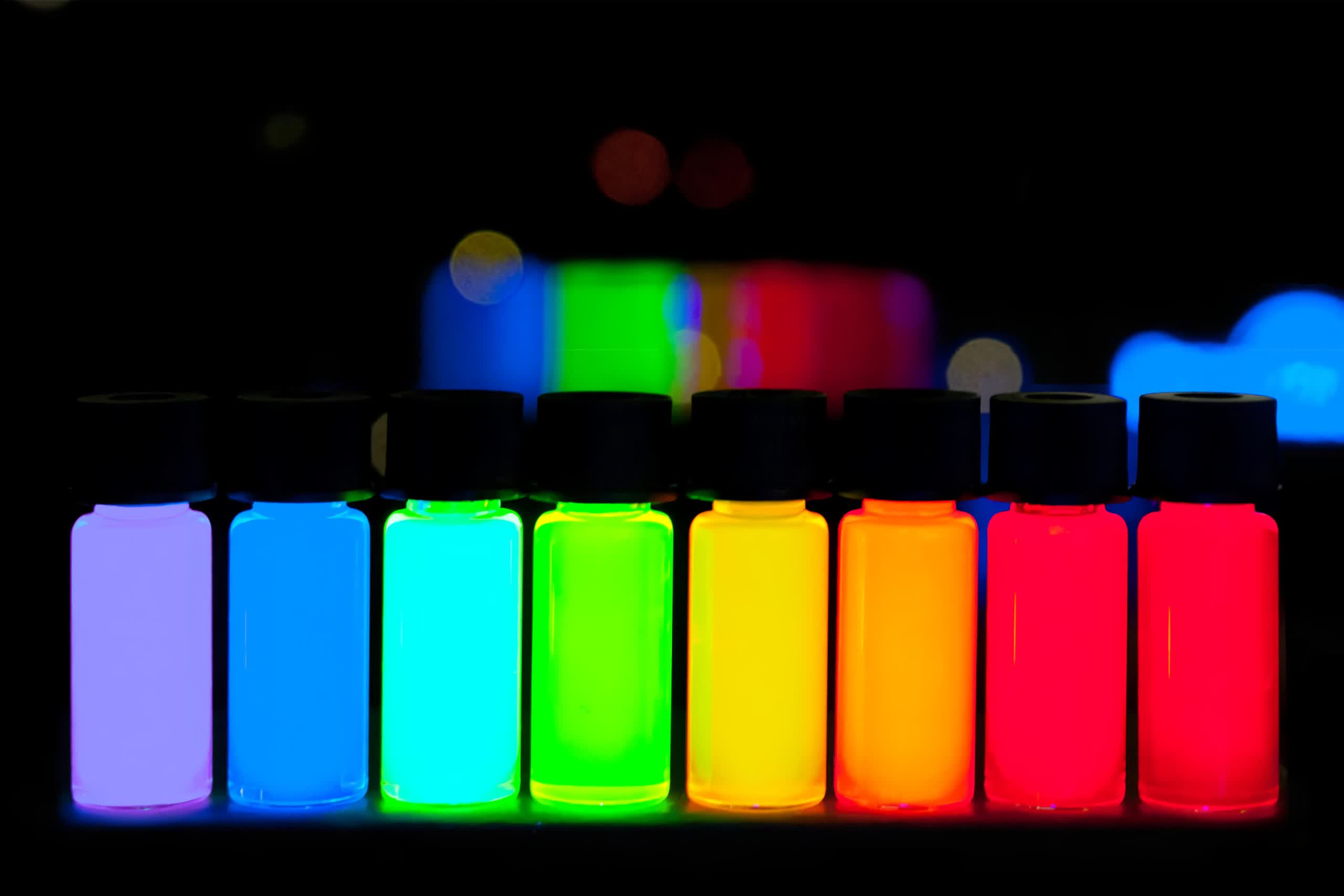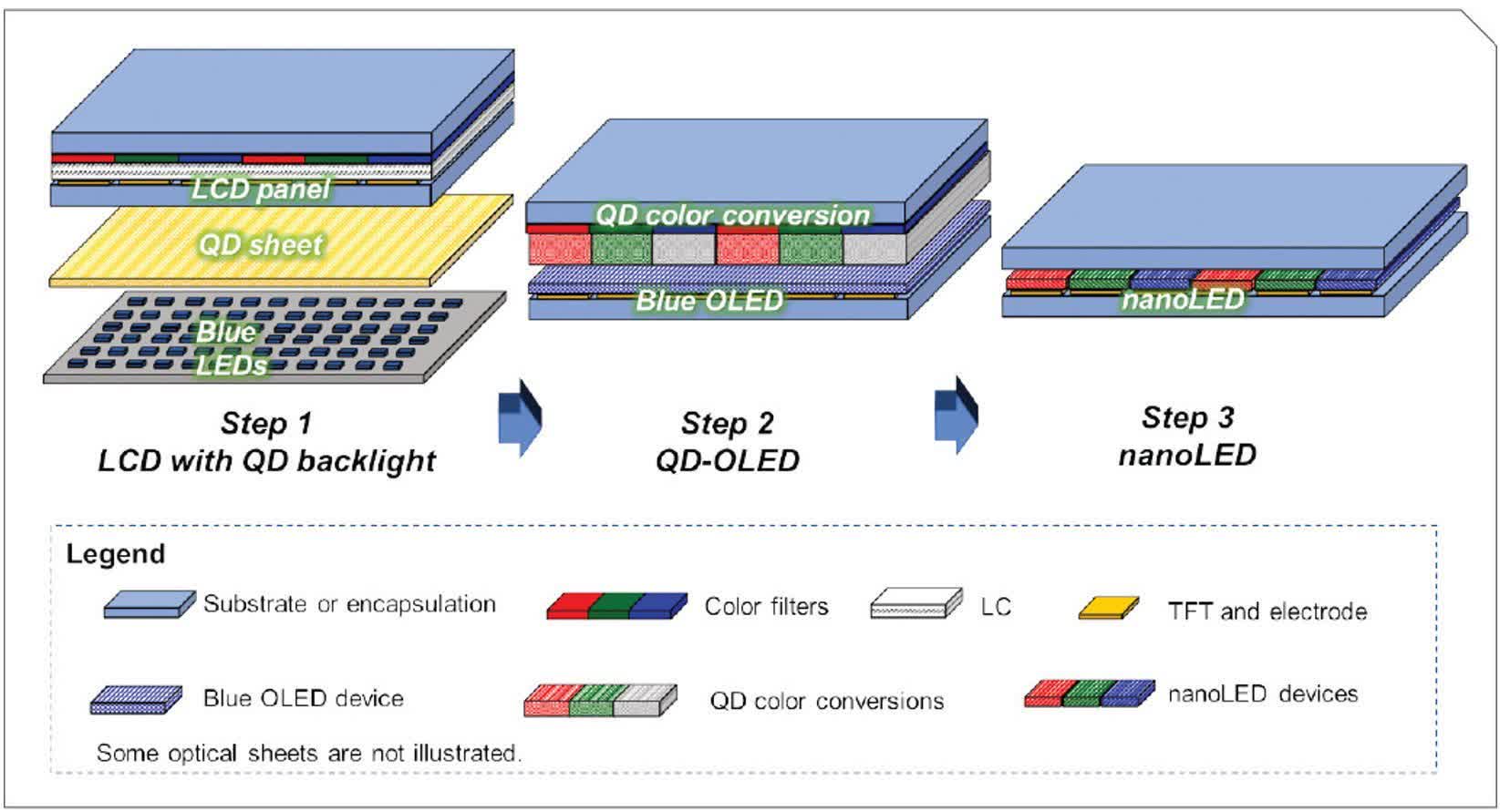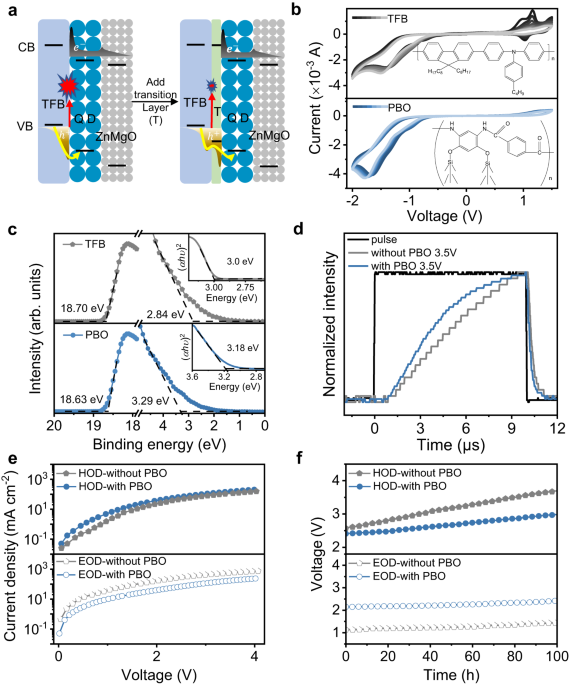The bleeding edge: Currently, the highest quality pictures come from displays with OLED screens. The blackest blacks and the bright, vibrant colors it produces are unmatched. The technology comes at a premium, but a stroll through the local department store shows that prices are beginning to come down. As prices start dipping for the latest electronics, we begin wondering about the next generation.

Micro-LEDs are in line to replace OLEDs but need another half decade or so of development before commercialization. Noctiluca notes that micro-LED tech will be ideal for transparent screens and displays viewed outdoors in sunlight, like cell phones and digital billboards. However, there is another display tech called QDEL that is much closer.
Ars Technica opines that QDEL, or quantum dot electroluminescent, might be the next bleeding-edge tech for high-end televisions, monitors, and gadgets with screens. Also known as NanoLED, QDEL is an emissive technology that does not require a backlight – electroluminescent quantum dots emit light directly. These Q-dots are the same as those in high-end QD-OLEDs but are brighter, cheaper, and more resistant to burn-in.

Furthermore, QDEL technology should be available within the next few years, whereas micro-LED won't be ready for consumers until around 2030. Quantum dot supplier Nanosys has been working on the tech for several years. Its potential brand name is NanoLED, but it has gone by other names during development, including QD-EL, QD-LED, EL-QD, and QLED, although Samsung trademarked the latter in 2016, the year before launching its QLED branded TVs.
Nanosys has tentatively targeted 2026 as its window for taking the technology commercial, but as a supplier, it is up to manufacturers like Sharp, Sony, and LG to take advantage of it. So we may not see comsumer sets until later.
"When it comes to consumer gadgets, [I expect] QDEL will most impact TVs, PC displays, and the automotive industry," Omdia Senior Research Director David Hsieh told Ars Tecnica. "If commercialized and mass-produced, QDEL can have a cost-to-performance ratio better than that of OLED, but it would still struggle to compete with LCD-LED on a cost basis."
As an OEM supplier, Nanosys doesn't produce displays, so prototypes that utilize QDEL are scarce, making the company's 2026 timeframe somewhat ambitious. However, it has released some beta-level QDEL tech to allow a handful of companies to experiment.
Digital Trends went to CES 2024 in January, specifically looking for QDEL prototypes. It took a while, and DT correspondent Caleb Denison was about to leave Las Vegas before getting a call from Sharp Display reps. They had heard he was looking for QDEL displays and invited him to view two "secret" prototypes in their CES "backroom" (video above).
Viewing any display in a video is not ideal for getting a good idea of the quality, and QDEL is no exception. However, Denison was impressed and excited by Sharp's small 12.3-inch prototype (shown) and its top-secret 30-inch QDEL display (hidden). He also said that Sharp may have some advancements to show off later this year.
Image credit: PlasmaChem
QDEL technology set to become the premium display replacement to OLEDs by 2026

